Top 150 ERP Interview Questions and Answers
Updated 16 Jul 2025

Asked in Odoo

Q. Which ERPs do you have experience in implementing?
I have experience in implementing SAP and Oracle ERPs.
Implemented SAP ERP for a manufacturing company
Implemented Oracle ERP for a retail company
Experience in customizing ERP modules to meet business requirements

Asked in Walmart Labs

Q. Explain the integration between SAP SD and SAP FI.
SAP SD and SAP FI integration enables seamless flow of data between sales and financial processes.
SAP SD generates sales orders and invoices which are posted in SAP FI
SAP FI manages financial transactions and accounting entries
Integration ensures acc...read more
Asked in SiliconIndia

Q. What is meant by ERP?
ERP stands for Enterprise Resource Planning.
ERP is a software system that integrates various business processes and functions into a single system.
It helps organizations to streamline their operations and improve efficiency.
ERP systems typically incl...read more
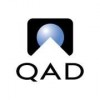
Asked in QAD

Q. Do you know any ERP software?
Yes, I know ERP software.
I have experience working with SAP ERP software.
I am familiar with Oracle ERP Cloud and Microsoft Dynamics 365.
I have also worked with open-source ERP software like Odoo and ERPNext.
I understand the basic functionalities of E...read more

Asked in Kapylon

Q. What modules have you worked on in ERP systems?
I have worked on multiple modules of ERPs including finance, inventory, and human resources.
Finance module: Managed financial transactions, budgeting, and reporting.
Inventory module: Handled stock management, procurement, and order fulfillment.
Human ...read more

Asked in LifeCare Group

Q. Tell me about some SAP transaction codes you have used in your previous job.
I have used several SAP transaction codes in my previous job as a Warehouse Executive.
MB1C - Goods Receipt
MB1A - Goods Issue
MMBE - Stock Overview
MM01 - Create Material Master
MM02 - Change Material Master

Asked in Crogies Global

Q. What is the difference between inbound and outbound deliveries in SAP EWM?
Inbound deliveries are goods coming into the warehouse, while outbound deliveries are goods leaving the warehouse in SAP EWM.
Inbound deliveries involve receiving goods from vendors or production, while outbound deliveries involve shipping goods to cu...read more

Asked in Accenture

Q. Explain what SAP MM is.
SAP MM is a module in SAP ERP that manages materials and inventory management processes.
SAP MM stands for Material Management.
It is a module in SAP ERP system.
It handles procurement, inventory management, and material valuation.
SAP MM integrates with...read more

Asked in MAYORA

Q. What T-code do you use to create Purchase Orders?
T-code ME21N is used to create Purchase Orders.
ME21N is the standard T-code used in SAP for creating Purchase Orders.
It allows users to create, modify, and display purchase orders.
Users can enter details such as vendor, material, quantity, and delive...read more
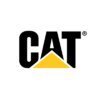
Asked in Caterpillar Inc

Q. What is ERP used for?
ERP is used for managing business processes and data across an organization.
ERP stands for Enterprise Resource Planning
It integrates various departments and functions of an organization
It helps in streamlining business processes and improving efficie...read more
ERP Jobs




Asked in Ganesh Grains

Q. Are you familiar with material receiving and issuing processes in ERP systems?
Yes, I am familiar with material received and issued in ERP systems.
I have experience in managing inventory in ERP systems.
I am knowledgeable about the processes involved in receiving and issuing materials in ERP.
I can effectively track and update in...read more

Asked in Amar Tea

Q. Explain the inward process in ERP.
Inward process in ERP refers to the process of receiving and recording incoming goods or materials.
Inward process involves checking the received goods against the purchase order or delivery note.
The goods are then inspected for quality and quantity.
T...read more
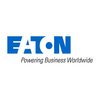
Asked in Eaton

Q. Explain SAP T-codes like MD04 and CS03.
SAP T codes are transaction codes used to access specific functions in SAP ERP system. MD04 is used for material planning and CS03 is used for displaying BOMs.
T codes are used to access specific functions in SAP ERP system
MD04 is used for material pl...read more

Asked in Amar Tea

Q. What are Accounts Payable and Accounts Receivable in ERP?
Account payable and Account receivable are financial terms used in ERP systems.
Account payable refers to the money that a company owes to its suppliers or vendors for goods or services received but not yet paid for.
Account receivable refers to the mo...read more

Asked in Assotech Realty

Q. How do you maintain ERP and MIS systems?
Maintaining ERP and MiS involves regular updates, data accuracy, security measures, and training.
Regularly update ERP and MiS systems to ensure they are current and functioning properly.
Ensure data accuracy by conducting regular audits and checks to ...read more

Asked in JP Infra

Q. How does liaison work in ERP?
Liaison in ERP involves communication and coordination between different departments and stakeholders to ensure smooth implementation and functioning of the system.
Liaison involves identifying key stakeholders and their roles in the ERP implementatio...read more

Asked in Infosys

Q. What is year shift in SAP FICO?
Year shift in SAP FICO refers to changing the fiscal year variant in the system to align with the company's financial reporting requirements.
Year shift allows for adjusting the start and end dates of the fiscal year in SAP FICO.
It is important for en...read more

Asked in Yazaki

Q. How do you create an invoice in SAP?
Creating an invoice in SAP involves several steps and transactions.
Access the SAP system and log in with appropriate credentials.
Navigate to the transaction code 'VF01' to create a new invoice.
Enter the necessary details such as the customer, billing...read more

Asked in Ginesys

Q. What is Retail ERP and what do you understand by it?
Retail ERP is an integrated software system that helps manage various retail operations such as inventory, sales, and customer data.
Retail ERP stands for Retail Enterprise Resource Planning.
It is a software solution designed specifically for the reta...read more
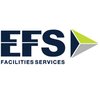
Asked in Efs Facilities Services

Q. Have you worked with any ERP software before?
Yes, I have worked on SAP ERP software.
I have experience in configuring and customizing SAP modules such as FI/CO, MM, and SD.
I have also worked on data migration and integration projects using SAP.
I am familiar with SAP HANA database and have worked...read more
Asked in Pristine Business Solutions

Q. What is ERP and what are its uses in businesses?
ERP stands for Enterprise Resource Planning. It is a software system used to manage and integrate a company's financials, supply chain, operations, reporting, and human resources.
ERP helps businesses streamline their processes and improve efficiency
I...read more

Asked in Heidelberg Cement

Q. What is ERP and what are its types?
ERP stands for Emergency Response Plan. It is a plan outlining procedures to follow in case of emergencies.
ERP is a detailed plan outlining steps to be taken in case of emergencies such as fires, natural disasters, or accidents.
There are different ty...read more
Asked in Ideal Movers

Q. Are you familiar with Excel and ERP systems?
Yes, I am proficient in Excel and have experience working with ERP systems.
Proficient in Excel for data analysis and reporting
Experience working with ERP systems such as SAP and Oracle
Able to create and maintain spreadsheets for inventory management ...read more
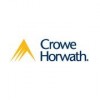
Asked in Crowe Horwath

Q. What is ERP consulting?
ERP consulting involves providing expertise and guidance on implementing and optimizing ERP systems for businesses.
Helping businesses select the right ERP system for their needs
Assisting with the implementation and customization of the ERP system
Prov...read more

Asked in Gamut InfoSystems

Q. What is an ERP solution?
An ERP solution is a software system that integrates various business functions and processes into a single platform.
Integrates different departments like finance, HR, sales, etc.
Improves efficiency by streamlining processes and data flow
Provides rea...read more

Asked in PwC

Q. What is ERP and how does it help a business?
ERP stands for Enterprise Resource Planning. It is a software system that integrates various business processes and functions to streamline operations and improve efficiency.
ERP helps businesses by centralizing and automating processes, such as finan...read more
Asked in ARIA Commodities

Q. Are you familiar with data entry in ERP systems?
Yes, I have experience in data entry in ERP systems.
I have worked with various ERP systems such as SAP, Oracle, and Microsoft Dynamics.
I am proficient in entering and managing data related to procurement processes such as purchase orders, invoices, a...read more

Asked in Accenture

Q. Explain the differences between ERP and S4HANA from a functional consultant's viewpoint.
ERP is a broader category of software that manages business processes, while S4Hana is a specific ERP solution developed by SAP.
ERP is a broader category of software that integrates various business functions like finance, HR, supply chain, etc., whi...read more
Asked in Accruon Technologies

Q. Do you know how to prepare a chart of accounts in ERP?
Yes, I know how to prepare chart of accounts in ERP.
I have experience in creating and maintaining chart of accounts in various ERP systems such as SAP, Oracle, and Microsoft Dynamics.
I understand the importance of a well-structured chart of accounts ...read more
Asked in Sankeshwar Minerals

Q. How would you implement an ERP system in our organization?
I will implement the ERP system by conducting a thorough analysis of current processes, selecting the right ERP software, customizing it to fit our needs, training employees, and ensuring smooth integration.
Conduct a detailed analysis of current busi...read more

Top Interview Questions for Related Skills
Interview Experiences of Popular Companies










Interview Questions of ERP Related Designations



Reviews
Interviews
Salaries
Users











